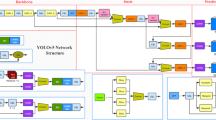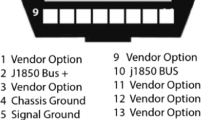Abstract
Road accidents occur at traffic signals, even though traffic patrolling and awareness are increased. Accidents occurred at traffic signal junctions are a significant proportion in the overall reported road accidents. Usually, when the drivers approaching the traffic signals, at the onset of yellow, the drivers would enter into a dilemma zone, where they will be in confusion mode assessing their capabilities to cross the intersection or stop. So, any improper decision might lead to a collision. To avoid right-angle crash, drivers apply harsh brake to stop before the traffic signals. But this may lead to back-end crash, when the following driver encounters the former’s sudden stopping decision. This situation gets multifaceted when the traffic is heterogeneous containing various types of vehicles. So, the main objective of this study is to assess the performance using machine learning techniques. In this study, support vector machine (SVM) and K-nearest neighbors’ (KNN) techniques are implemented to validate the classification of the driving behaviour in terms of safe stopping/unsafe stopping at the signalized junctions at the onset of the yellow signal.








Similar content being viewed by others
References
Organization WH. Global status report on road safety. World Health Organization; 2018.
Jahangiri A, Rakha H, Dingus TA. Red-light running violation prediction using observational and simulator data. Accid Anal Prev. 2016;96:316–28. https://doi.org/10.1016/j.aap.2016.06.009.
Polders E, Daniels S, Hermans E, Brijs T, Wets G. Crash patterns at signalized intersections. Transp Res Record. 2015;2514(1):105–16. https://doi.org/10.3141/2514-12.
Hussein N, Hassan R. Surface condition and safety at signalised intersections. Int J Pavement Eng. 2017;18(11):1016–26. https://doi.org/10.1080/10298436.2016.1141411.
Kadilar GO. Effect of driver, roadway, collision, and vehicle characteristics on crash severity: a conditional logistic regression approach. Int J Inj Contr Saf Promot. 2016;23(2):135–44. https://doi.org/10.1080/17457300.2014.942323.
Islam MT. Investigating the speed and rear-end collision relationship at urban signalized intersections. Transp Res Record. 2016;2601(1):10–6. https://doi.org/10.3141/2601-02.
Zhou M, Qu X, Li X. A recurrent neural network based microscopic car following model to predict traffic oscillation. Transp Res Part C. 2017;84:245–64. https://doi.org/10.1016/j.trc.2017.08.027.
Eftekhari HR, Ghatee M. Hybrid of discrete wavelet transform and adaptive neuro fuzzy inference system for overall driving behavior recognition. Transp Res Part F. 2018;58:782–96. https://doi.org/10.1016/j.trf.2018.06.044.
Huang X, Sun J, Sun J. A car-following model considering asymmetric driving behavior based on long short-term memory neural networks. Transp Res Part C. 2018;95:346–62. https://doi.org/10.1016/j.trc.2018.07.022.
Hurwitz DS, Wang H, Knodler MA, Ni D, Moore D. Fuzzy sets to describe driver behavior in the dilemma zone of high-speed signalized intersections. Transp Res Part F. 2012;15(2):132–43. https://doi.org/10.1016/j.trf.2011.11.003.
Chen C, Liu X, Chen H, Li M, Zhao L. A rear-end collision risk evaluation and control scheme using a Bayesian network model. IEEE Trans Intell Transp Syst. 2019;20(1):264–84. https://doi.org/10.1109/TITS.2018.2813364.
Stylianou K, Dimitriou L. Analysis of rear-end conflicts in urban networks using Bayesian networks. Transp Res Record. 2018;2672(38):302–12. https://doi.org/10.1177/0361198118790843.
Guardiola IG, Leon T, Mallor F. A functional approach to monitor and recognize patterns of daily traffic profiles. Transp Res Part B. 2014;65:119–36. https://doi.org/10.1016/j.trb.2014.04.006.
Amsalu SB, Homaifar A, Afghah F, Ramyar S, Kurt A, editors. Driver behavior modeling near intersections using support vector machines based on statistical feature extraction. 2015 IEEE intelligent vehicles symposium (IV); 2015: IEEE.
Wang W, Xi J, Chong A, Li L. Driving style classification using a semisupervised support vector machine. IEEE Trans Hum-Mach Syst. 2017;47(5):650–60.
Qian H, Ou Y, Wu X, Meng X, Xu Y. Support vector machine for behavior-based driver identification system. J Robot. 2010. https://doi.org/10.1155/2010/397865.
Gazis D, Herman R, Maradudin AJOR. The problem of the amber signal light in traffic flow. Oper Res. 1960;8(1):112–32.
Tarko A, Li W, Laracuente L. Probabilistic approach to controlling dilemma occurrence at signalized intersections. Transp Res Record. 2006;1973(1):55–63.
El-Shawarby I, Rakha H, Inman VW, Davis GW. Evaluation of driver deceleration behavior at signalized intersections. Transp Res Rec. 2007;2018(1):29–35.
Guenther N, Schonlau M. Support vector machines. Stata J. 2016;16(4):917–37.
Xue Q, Wang K, Lu JJ, Liu Y. Rapid driving style recognition in car-following using machine learning and vehicle trajectory data. J Adv Transp. 2019. https://doi.org/10.1155/2019/9085238.
Wang J-S, Lin C-W, Yang Y-TC. A k-nearest-neighbor classifier with heart rate variability feature-based transformation algorithm for driving stress recognition. Neurocomputing. 2013;116:136–43.
Meyer D, Wien FT. Support vector machines. The Interface to libsvm in package e1071. 2015:28.
Abdiansah A, Wardoyo R. Time complexity analysis of support vector machines (SVM) in LibSVM. Int J Comput Appl. 2015;128(3):28–34.
Elhenawy M, Jahangiri A, Rakha HA, El-Shawarby I. Classification of driver stop/run behavior at the onset of a yellow indication for different vehicles and roadway surface conditions using historical behavior. Procedia Manu. 2015;3:858–65.
Jahangiri A, Rakha HA, Dingus TA, editors. Adopting machine learning methods to predict red-light running violations. 2015 IEEE 18th International Conference on Intelligent Transportation Systems; 2015: IEEE.
Aoude GS, Desaraju VR, Stephens LH, How JP. Driver behavior classification at intersections and validation on large naturalistic data set. IEEE Trans Intell Transp Syst. 2012;13(2):724–36.
Yi D, Su J, Liu C, Quddus M, Chen W-H. A machine learning based personalized system for driving state recognition. Transp Res Part C. 2019;105:241–61.
Funding
Soni L Karri’s PhD is funded by Universiti Brunei Darussalam under the University Bursary Scholarship. This research is also partially funded by Universiti Brunei Darussalam’s research grants (UBD/PNC2/2/RG/1(311) & UBD/RSCH/1.11/FICBF/2018/002).
Author information
Authors and Affiliations
Corresponding author
Ethics declarations
Conflict of interest
The authors declare that there is no conflict of interest.
Additional information
Publisher's Note
Springer Nature remains neutral with regard to jurisdictional claims in published maps and institutional affiliations.
This article is part of the topical collection “Data Science and Communication” guest edited by Kamesh Namudri, Naveen Chilamkurti, Sushma S J and S. Padmashree.
Rights and permissions
About this article
Cite this article
Karri, S.L., De Silva, L.C., Lai, D.T.C. et al. Classification and Prediction of Driving Behaviour at a Traffic Intersection Using SVM and KNN. SN COMPUT. SCI. 2, 209 (2021). https://doi.org/10.1007/s42979-021-00588-7
Received:
Accepted:
Published:
DOI: https://doi.org/10.1007/s42979-021-00588-7




